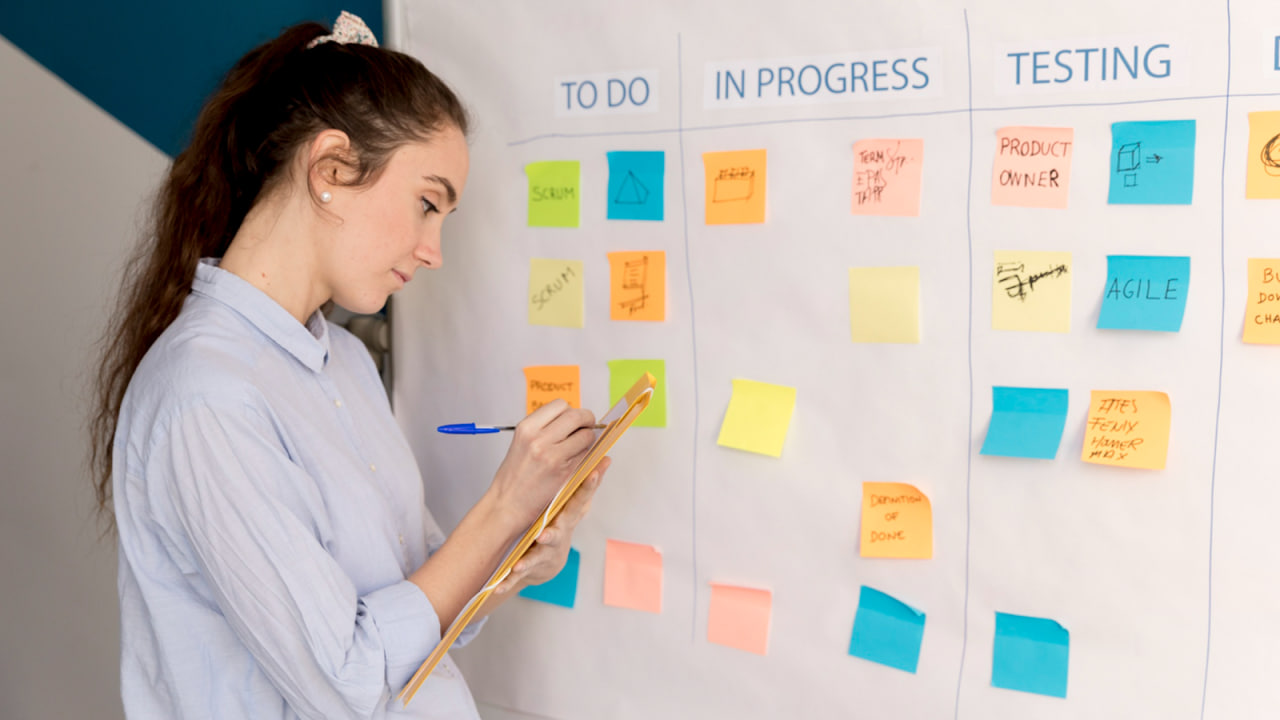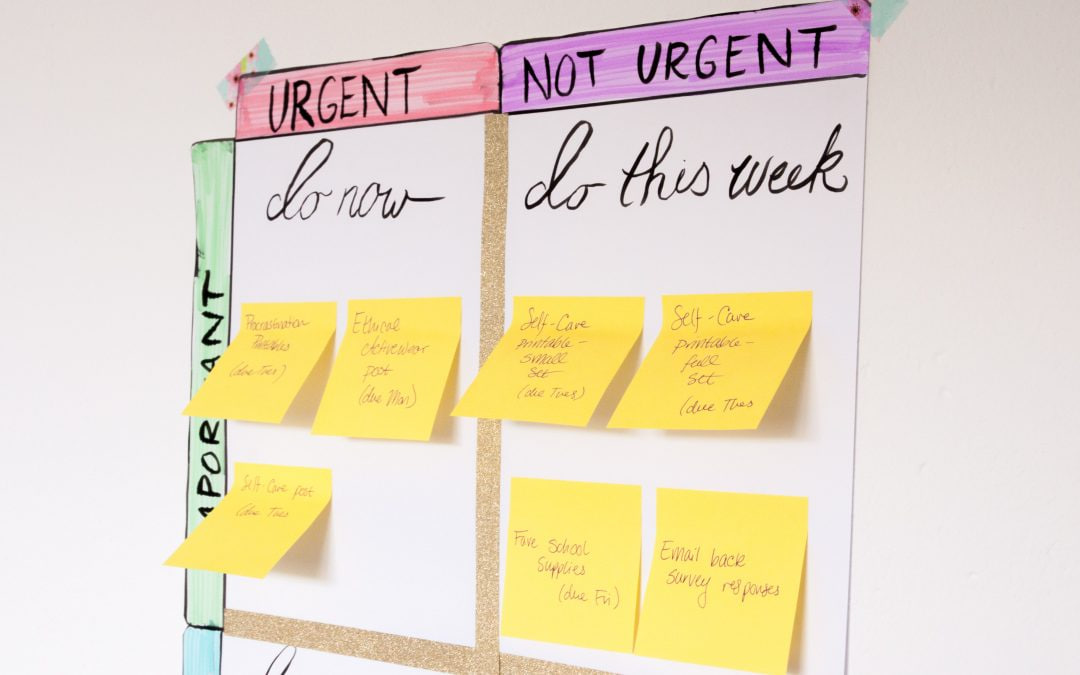What is the Eisenhower Matrix? Its Elements and Steps to Benefit from It -Part II
People often get caught up in the emergencies of daily life and are forced to prioritize them over their personal goals and ambitions.
The Eisenhower Matrix is used to overcome this problem by classifying tasks based on urgency and importance. The first part of the article provides comprehensive information about the Eisenhower Matrix.
It explains the nature of the tasks in the first two quardrants. The second part explores the remaining two quarters, so follow the following lines with us.
Eisenhower Matrix
Details of the remaining two quadrants of the matrix:
3. Urgent and unimportant
This quadrant expresses a state of constant preoccupation and contains tasks that aim to serve others and do not contribute to achieving the individual's personal goals in the long term. Examples include the following:
- Unnecessarily interrupting colleagues.
- Checking the mobile phone or email.
- Responding to emails, social media platforms, and text messages.
- Using discount coupons and limited-time offers.
- Some meetings.
The urgency of the third quadrant affects all areas of life, as some people tend to complete tasks due to real or supposed deadlines, leading to taking on work that does not help them achieve personal goals in the long term.
Quadrant 3 often contains urgent tasks that are related to someone else’s priorities, meaning that people are doing the work and tasks imposed on them at the expense of their personal desires and goals.
Focusing on Quadrant 3 tasks can lead to a person feeling a loss of control over their daily life and unable to achieve their goals.
Covey recommends delegating as many tasks as possible in this quadrant, such as taking notes during meetings, ordering grocery delivery from the store instead of going out shopping, entrusting the children with helping with cleaning the house, assigning a virtual assistant to schedule family doctor appointments, or using automation tools when possible.
If you are unable to delegate these tasks, then you can reduce their impact on your daily life by committing to the following steps:
- Turn off notifications on your mobile phone and personal computer while working.
- Be honest with others about how much time you can devote to working on a particular task.
- Defer tasks in this quadrant to times when your energy is low instead of in the morning when you are most energetic.
- Discuss your responsibilities at work with your manager.
- Reject requests when possible.

4. Quadrant Four: Unimportant and Non-urgent
This quadrant contains activities and tasks that waste a lot of time and do not contribute to achieving goals. These activities should be removed from the to-do list, and examples include the following:
- Watching TV for long hours.
- Excessive browsing of social media sites.
- Avoiding activities such as sorting and organizing emails instead of answering incoming messages.
- Excessive online shopping.
Quadrant four includes activities that produce an immediate and fleeting feeling of pleasure but deprive a person of long-term contentment and satisfaction.
A person needs to set aside some time for entertainment and fun, and Eisenhower was famous and subjected to much criticism due to the frequent golf trips he took during his term. These activities help achieve balance under work pressures, but they must be thoughtful and purposeful so as not to drain a person's energy, passion, and creative abilities.
A recent study published in the journal Applied Psychology revealed that how employees spend their free time during the holidays and after work affects their energy and enthusiasm levels the next workday.
The study's results showed that employees who practice activities that help them control themselves, such as exercise or volunteer work, are more enthusiastic than others on the next workday, and employees who practice relaxing activities such as yoga, meditation, or listening to music are more likely to work calmly and balanced the next day.
Some employees resort to distraction and distraction activities such as excessive TV viewing to distract themselves from problems and avoid them.
The results showed that they succeeded in renewing their enthusiasm and energy on the next workday, but relying on distraction over time leads to a bad mood and a decrease in the employee’s level of enthusiasm for the rest of the workweek.
This means that there is no harm in practicing distraction activities in moderation, but relying on them can lead to a decrease in the employee’s level of satisfaction with his work in the long term.
Balancing the Quadrants of the Matrix
Stephen Covey confirms that the tasks of the second quadrant contribute to improving work efficiency. This quadrant represents the intersection of personal and professional development with planning, prevention, and action.
You can determine the dominant quadrant in your life by monitoring your time and following up on your tasks. Time and task management applications also help record the completed tasks and their completion dates.
You should collect task data for a few days and set aside some time to arrange them within the matrix by answering the following two questions:
- Was this task urgent for me?
- Was this task important for me?
Be sure to determine these criteria based on the results you want to achieve without caring about others' opinions.
The next step requires determining the quadrant that consumes the most significant part of your time and estimating your satisfaction with the result. You will discover that you are facing one of the following cases:
1. You spend a lot of time in the first quadrant
You should set aside some time to plan, anticipate potential problems, and prevent them before they occur
Next step: Develop a weekly or monthly action plan based on your current goals and the required deadlines.
At the end of each week, you should review and evaluate the plan's quality and make necessary adjustments to improve the effectiveness of the work in the following week.
If most of the tasks in the first quadrant are external, then you should prepare and plan to deal with them, cooperate with your colleagues and clients to organize the workflow, and discuss with your manager the subject of responsibilities and workload imposed on you.
It is advisable to end the relationship with any client who causes many tasks belonging to the first quadrant.

2. You spend most of your time on Quadrant III tasks
You should resort to delegating tasks, deleting them, or setting a time limit for them
Next step: Develop a strategic plan that includes precise action steps to help reduce these tasks. Consider the possibility of delegating them, refusing to perform them, or collecting and completing them in one batch simultaneously.
On the other hand, you can discuss your busyness and lack of time with your manager frankly and suggest possible solutions.
3. You spend most of your time in Quadrant IV
Perhaps you suffer from stress or monotony or are trying to avoid a problem
Next step: Use time-tracking tools to identify the tasks and activities that waste your time and develop an appropriate strategic plan to avoid or reduce them.
You should plan to deal with the tendency to procrastinate and take breaks occasionally, but without overdoing the enjoyable activities more than necessary.
In conclusion
To accomplish your tasks efficiently, you must first determine the quadrant to which each task belongs and how to deal with it as follows:
- Quadrant One: Important and Urgent
- Review upcoming tasks and make a plan to accomplish them before the rest of the other tasks.
- Quadrant Two: Important and Non-Urgent
- Set an appropriate date for submitting these tasks.
- Quadrant Three: Urgent and Non-Important
- Delegate as many tasks as possible.
- Non-Important and Non-Urgent
- Delete tasks.


 Main menu
Main menu





